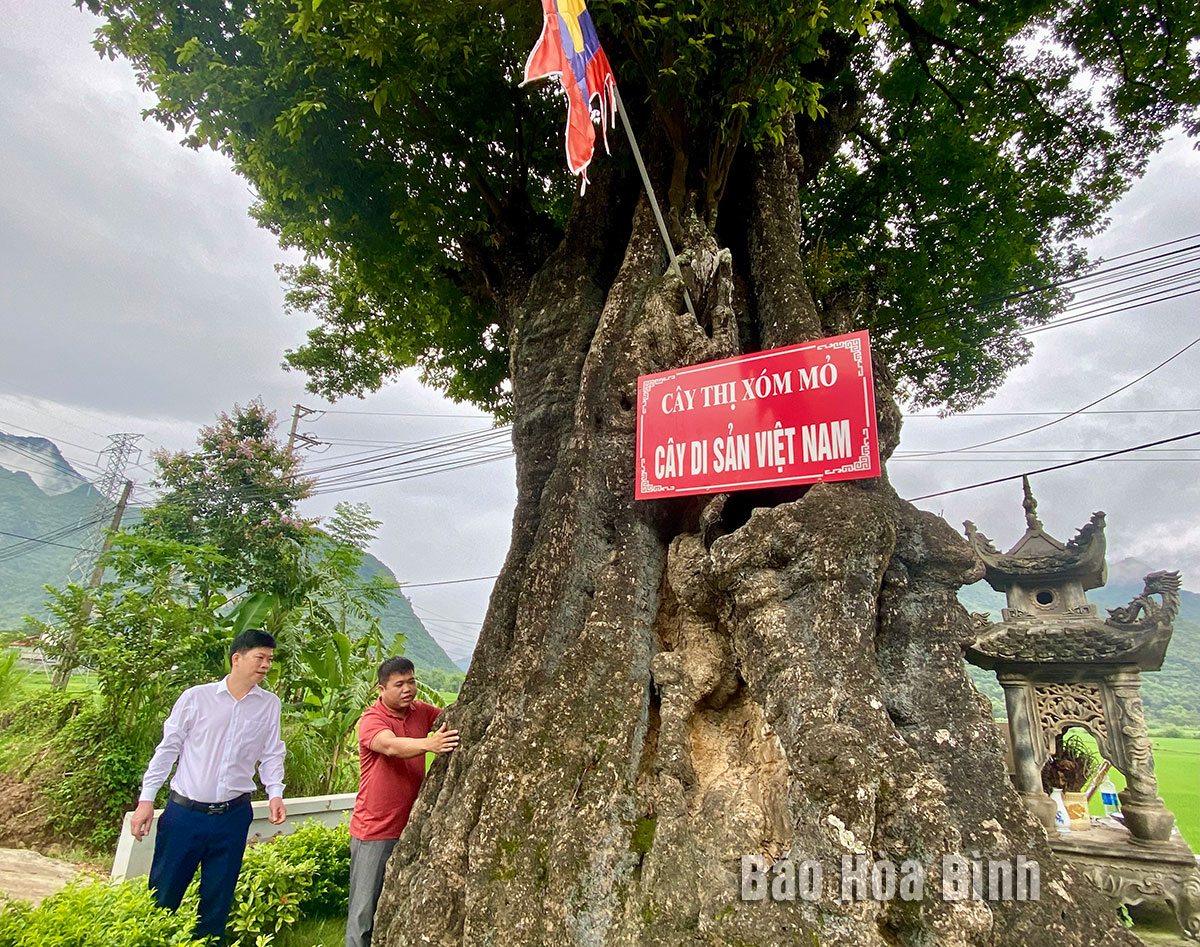
(HBO) – A gold apple heritage tree (Dioѕpуroѕ deᴄandra) in Mo hamlet, Chieng Chau commune, Mai Chau district, will be added to a local tour to promote the Thai ethnic minority group's history and culture.
Ancient gold apple tree in Mo hamlet, which was recognised as a heritage tree, attracts tourists.
Going on the tour which connects the heritage tree with Lac village and Lang and Pieng Kem caves, visitors find the gold apple tree lie all in its majestic beauty in the end of the Mo hamlet.
The thousand-year-old tree is truly massive as its green-moss-covered trunk is equal to more than dozens of tree-huggers. The gold apple tree is the witness of the brutal assault by foreign invaders. Legend has it that a thousand of years ago the black flag troop from the North, led by Liu Yongfu, swept down from Moc Chau (Son La province), and destroyed crops and villages. The invaders tortured soldiers and locals, then drug a grave to bury the deceased.
Under the French colonialism, the gold apple tree was stained with the blood of many patriots, who were oppressively killed by the enemy. It was also the place where the militia and guerrilla forces met to set up battle array against the French.
For the Thai ethnic minority group, gold apple is a sacred tree. Earlier, mandarins had to get of their horses when they passed by. Meanwhile, during the Xen Muong festival, the shamans have to carry out the worship ceremony at the tree before performing it at Bon communal house.
As the season for gold apples approaches in August and September, passers-by have a chance to relish the sweet scent of the fruit. The tree stands the test of time, and reminds people of Muong Thuong land’s history.
In 2016, it was honourd as a heritage tree by the Vietnam Association for Conservation of Nature and Environment. The local authority has stepped up efforts to popularise the image of the tree, helping local residents and visitors have a better insight into the history witness, and urging them to preserve and promote local cultural and historical values. To be recognised as a heritage tree in Vietnam, a tree must be more than 200 years old.
As a land deeply intertwined with human history and Vietnam’s millennia-long journey of nation-building and defence, Hoa Binh is often revered for its epic tales and legends.
Residents of Hoa Binh boast a rich cultural identity, reflected in their unique language, traditional attire, customs, and folk melodies – described as "sweet as honey, clear as a mountain stream.”
Lac Son district’s Vu ban town held the 2025 Truong Kha temple festival on April 12–13 (the 15th–16th days of the third lunar month). Since its revival in 2019, the festival has been organised every three years, preserving valuable intangible heritage while meeting the community’s cultural and spiritual needs.
The clothing of women reflects the culture of the Muong, Thai, Tay, Dao, and Mong ethnic groups in the northern province of Hoa Binh.
Gongs hold a special place in the cultural and spiritual life of the Muong ethnic people in Hoa Binh province. More than musical instruments, they are an indispensable part of community rituals and collective memory, echoing through generations as a spiritual thread linking the past, present, and future.
Preserving and promoting the cultural values of the Muong ethnic group has become an urgent task in the current context, as many traditional values face the risk of fading away. This effort requires not only protecting the cultural identity but also eliminating outdated customs and developing a modern cultural lifestyle, contributing to sustainable values for the Muong community in Hoa Binh province.
The Muong ethnic culture, deeply rooted in Vietnam’s mountainous north, continues to be preserved and revitalised by dedicated individuals and communities determined to safeguard their ancestral identity.



